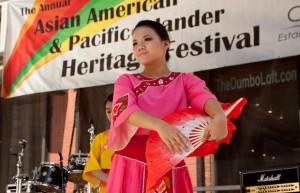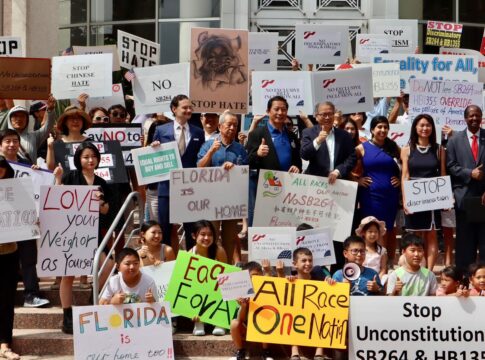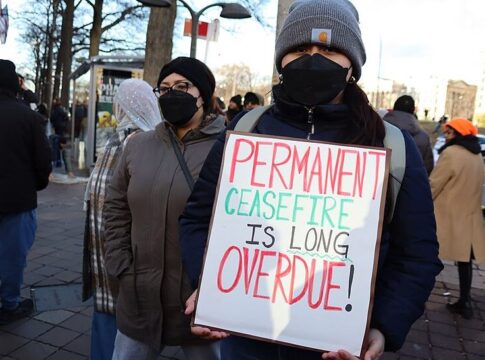 By Farah Z. Ahmad and Karthick Ramakrishnan
By Farah Z. Ahmad and Karthick Ramakrishnan
It’s hard to imagine that such seemingly diverse groups—Indian Americans and Cambodian Americans could all be grouped together because of their similarities—but they are. These national origin groups, along with many others, make up the Asian American population, and we find even more diversity when we include various groups of Pacific Islanders who, together, make up the AAPI population. While many of these the Asian American population and Pacific Islander populations were grouped together due to similar histories or geographies, what differs between these groups can be more defining. For example, only 13 percent of Laotian Americans has a bachelor’s degree or higher compared to 53 percent of Chinese Americans. These same is true across a variety of socioeconomic and health outcomes. Yet, for so long, only few policymakers knew this, and many only did so anecdotally, while the rest of the country crowned Asian Americans as the “Model Minority”, giving critics ammunition to censure other communities of color for not being as hard-working and giving activists a green light to focus on high-stakes issues in other communities. But not all Asian Americans are model minorities and not all minorities, AAPIs included, are struggling. There is a significant amount of complexity and diversity underneath the racial categories of Asian and Pacific Islander, and this diversity has only begun to be explored in recent years.
The State of Asian Americans and Pacific Islanders report series, produced by Center for American Progress and AAPI Data, brings together the most salient data points on AAPIs on a range of dimensions by detailed origin, from public opinion to immigration to labor market outcomes. Findings from their recent Labor-Market Outcomes report reveal that Asian Americans have been the most rapidly growing segment of the U.S. labor force, with high labor force participation— for Asian American men and Pacific Islander women. Asian Americans also have had the lowest rates of unemployment in recent years. However, among those who are unemployed, they are among those with the longest duration of unemployment. The report also shows that there is considerable occupational diversity across detailed origins with some groups like Indian, Sri Lankan, and Chinese Americans more likely to be concentrated in management and professional occupations, while Vietnamese and Thai Americans are more likely to work in service occupations. Similar variations exist across Pacific Islander groups as well, pointing to the need for timely, disaggregated data on labor market outcomes.
LATEST STORIES
Today, the U.S. Department of Labor took a step in that direction by announcing the publication of its new report, The Economic Status of Asian Americans and Pacific Islanders in the Wake of the Great Recession. This report, a follow-up to a 2011 Department report on the AAPI labor force during the recovery, breaks down AAPI labor market data by nationality, to illustrate how various communities have fared since the Great Recession. It is exactly this kind of detailed analysis that advocates and research organizations have been encouraging for years.
The federal government is the epicenter of U.S. data collection and its processes for data collection and analysis often determine how much we know—or don’t know—about how American families are doing—and there is a significant gap in what we know about AAPI communities. The need for this data is greater than ever as Asian Americans and Pacific Islanders are the fastest growing populations in the United States, growing an average of 46 percent and 40 percent, respectively, between 2000 and 2010, compared to nationwide average growth of only 10 percent. The purchasing power of Asian Americans is also growing faster than the national average, as is the growth of the AAPI electorate. This rapid growth of AAPIs is both a force to be reckoned it, but most importantly that are a community that needs to be understood. In order to have an accurate sense of our country’s economic, social, and political future, it is critically important to have a current and detailed understanding of the AAPI population, and their outcomes and trajectories on key policy dimensions. And more detailed and timely data from the federal government is an important step forward in that regard.
Farah Ahmad is a Policy Analyst for Progress 2050 at the Center for American Progress. Karthick Ramakrishnan is professor of public policy and political science at University of California, Riverside. They are the coauthors of the State of Asian Americans and Pacific Islanders report series, which provides new insight and analysis along numerous issue areas such as Labor-Market Outcomes, Consumer Power and Business Ownership, Income and Poverty, Education, Civic Participation and Democracy, among others.
Related story: Economic Scars Remain for Asian Americans & Pacific Islanders Since the Great Recession








